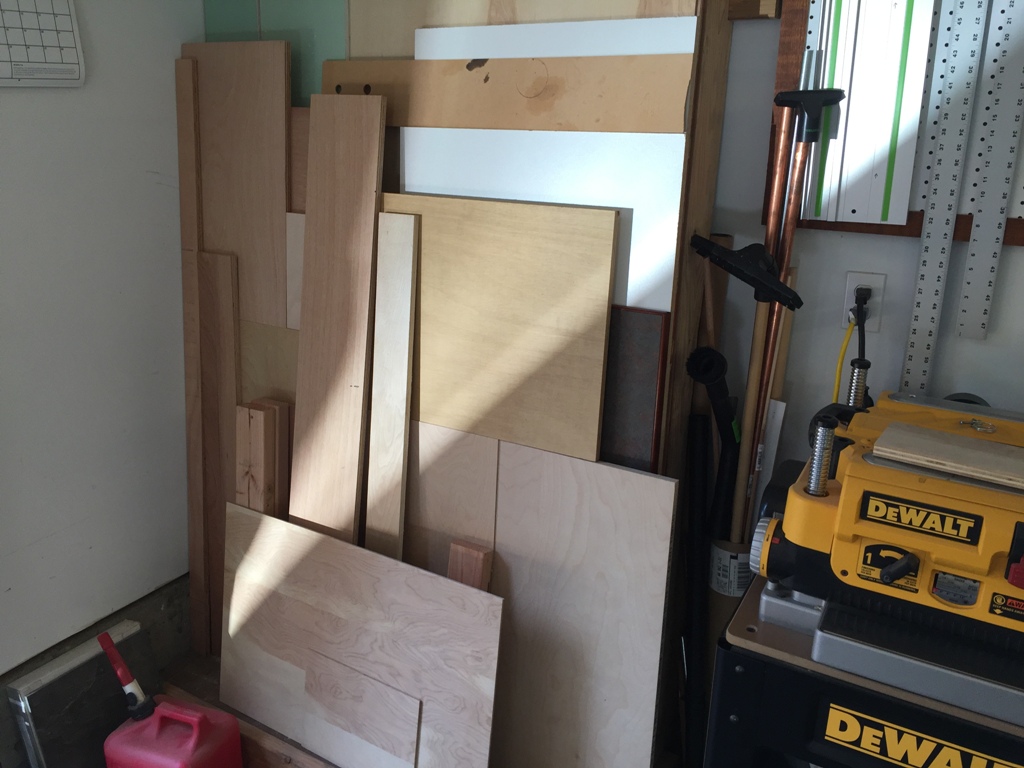Everyone come running because I am giving shop tips today!
What? No one. Okay, everyone come running because you’ll get two bucks!
Maybe these shop tips are things you already knew, but there’s still value in reading them, because even if you know 90% of this stuff, it’s the 10% that you didn’t know that might make you a better woodworker.
Those long aluminum rulers are great, but they will leave marks on things like drywall and painted surfaces. So cover the back of them with some masking tape. It makes for a smooth surface that won’t leave marks. Do not put tape on the front side, though, because then you won’t be able to read the numbers.
Sanding pads are expensive, so get the most out of them. Even when they’re spent, there’s usually enough grit left on them that you can sand some things by hand. I folded this one up and used it to sand inside the corner that the sander could not reach.
If you use dowels to plug holes, you probably know that it’s easiest when they’re tapered a little bit, that way they fit into the hole. Want a tool that does this for you ? Try a pencil sharpener. You can get a little hand held one for about $1 and it will very neatly taper your dowel plugs.
You don’t need a fancy pants phone dock. Two J-hooks on your pegboard will do the trick nicely. I drilled a hole for the charger. In my shop, the phone controls the music and it takes all these lovely pictures you’re looking at, so it’s nice when it’s in easy reach.
You’re going to own tools that you don’t have a use for except for very rarely. This is okay. When the circumstance comes up that you need it, you’ll be happy you have it.
If you want to protect something with duck tape, but don’t want to risk ruining the finish with its strong adhesive, you can put down some masking tape and then put duck tape on that. It will pull off the floor easily and won’t damage anything, and you can protect the floor’s finish from the edge of the sander.
Don’t throw away your sponge brush until you’ve checked for drips. Saturate the end grain with as much polyurethane as it will absorb. You’ll never regret pre-drilling your nail holes, whereas you’ll always regret splitting your wood if you didn’t pre-drill.
If you’re fortunate enough to have a nice view, be sure to orient your shop so that you get to enjoy that view while you work.
I’ve used the same stir stick for polyurethane for like 15 years now. I now know what over a hundred layers of polyurethane look like. I also know the consequences of adding layers of polyurethane without sanding in between coats: nothing. It makes no difference if you don’t sand. It’s just a little lumpy, that’s all.
A bug zapper for your shop may be the best tool you buy all year.
As promised, here’s two bucks.























